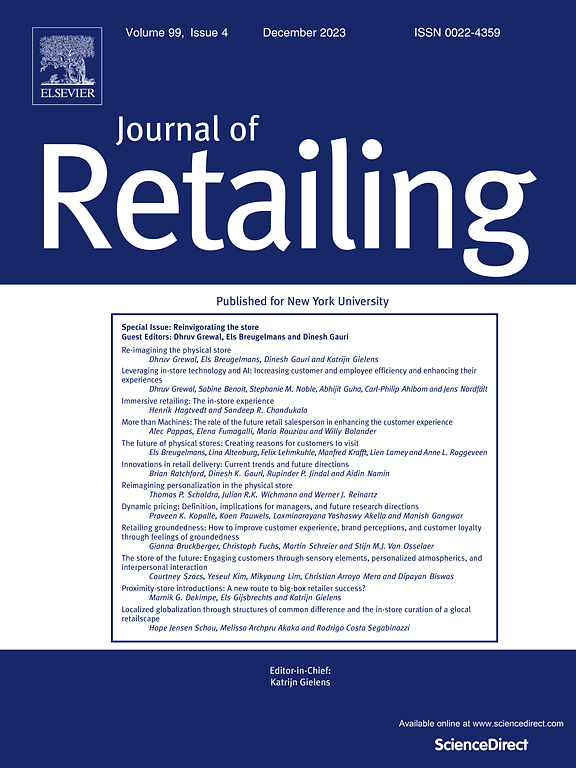Lost in translation? How multilingual packaging influences product evaluations by impeding consumers’ processing fluency
IF 10.2
1区 管理学
Q1 BUSINESS
引用次数: 0
Abstract
Owing to the global nature of today's marketplace, companies commonly use standardized packaging to distribute their products in multiple countries. Hence, consumers are regularly confronted with packaging that presents product information in their native language and in multiple foreign languages. However, how this impacts consumers has rarely been studied. In three experimental studies (N = 3,010), we identify processing fluency as an important driver of the consumer-sided consequences of multilingual packaging. Our research finds that the presence of foreign languages with which consumers are only weakly familiar impedes their mental processing of the product, resulting in less favorable product evaluations. Furthermore, a high number of translations printed on packaging also decreases processing fluency. Although multilingual packaging might be seen as a purely distributional cost-cutting method, the results of this research suggest that companies need to carefully consider how many and which languages are placed on packaging to realize their products’ full sales potential. Theoretical contributions, implications for packaging design, and directions for further research are discussed.
迷失在翻译中?多语言包装如何通过阻碍消费者的加工流畅性来影响产品评价
由于当今市场的全球性,公司通常使用标准化包装在多个国家分销他们的产品。因此,消费者经常会遇到用他们的母语和多种外语呈现产品信息的包装。然而,这对消费者的影响却很少被研究。在三项实验研究(N = 3,010)中,我们确定加工流畅性是多语言包装对消费者产生影响的重要驱动因素。我们的研究发现,消费者不太熟悉的外语的存在阻碍了他们对产品的心理加工,导致对产品的评价不那么好。此外,印刷在包装上的大量翻译也降低了处理的流畅性。虽然多语言包装可能被视为纯粹的分销成本削减方法,但这项研究的结果表明,公司需要仔细考虑在包装上放置多少语言和哪些语言,以实现其产品的全部销售潜力。讨论了理论贡献、对包装设计的启示和进一步研究的方向。
本文章由计算机程序翻译,如有差异,请以英文原文为准。
求助全文
约1分钟内获得全文
求助全文
来源期刊

Journal of Retailing
BUSINESS-
CiteScore
15.90
自引率
6.00%
发文量
54
审稿时长
67 days
期刊介绍:
The focus of The Journal of Retailing is to advance knowledge and its practical application in the field of retailing. This includes various aspects such as retail management, evolution, and current theories. The journal covers both products and services in retail, supply chains and distribution channels that serve retailers, relationships between retailers and supply chain members, and direct marketing as well as emerging electronic markets for households. Articles published in the journal may take an economic or behavioral approach, but all are based on rigorous analysis and a deep understanding of relevant theories and existing literature. Empirical research follows the scientific method, employing modern sampling procedures and statistical analysis.
 求助内容:
求助内容: 应助结果提醒方式:
应助结果提醒方式:


